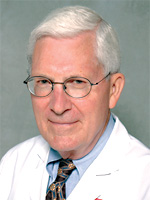|
 
- 现金
- 62111 元
- 精华
- 26
- 帖子
- 30441
- 注册时间
- 2009-10-5
- 最后登录
- 2022-12-28

|
回复 0914 的帖子
Liver Cancer and Hepatitis Viruses
 |  |  | Paul F. Engstrom, MD
Senior Vice President for Population Science |  |  |  | Alison A. Evans, ScD
Associate Member |  |  |  | W. Thomas London, MD
Senior Member |  |
Alison A. Evans, ScD, Associate Member
W. Thomas London, MD, Senior Member
Paul F. Engstrom, MD, Senior Vice President for Population Science
Fox Chase Cancer Center
Philadelphia, PennsylvaniaThe most common form of liver cancer, hepatocellular carcinoma (HCC), has become a disease of increasing importance in the US and other Western countries as the numbers of affected individuals increase. In fact, the HCC incidence rates doubled between 1985 and 1998 in the US, reaching just over 4 cases per 100,000 people in 2000, with a proportionally greater increase in the incidence rates in younger age groups.
Worldwide, liver cancer is the third most common cause of cancer death, with approximately 550,000 annual deaths. The American Cancer Society estimates that there will be 15,420 deaths from liver cancer in the US in 2005, of which 70%--80% will be HCC. Liver cancer is the eighth most frequent cause of cancer mortality in US men and the twelfth in women. The highest incidence rates are found among Asian-Americans, who have about double the risk of African-Americans and Hispanics and four times the risk of Caucasians.
Chronic infection with hepatitis C virus (HCV) and/or hepatitis B virus (HBV) is associated with the majority of HCC cases. Recent estimates for the US have attributed 47% of cases to HCV alone, 15% to HBV alone, and 5% to coinfection with both viruses. The other 33% of cases appear to be due to nonviral causes. Internationally, HBV is responsible for a far greater proportion of HCC cases than it is in the US, reflecting the higher prevalence of HBV in many developing countries.
Currently, an estimated 1.3 million Americans are chronically infected with HBV and 2.7 million chronically infected with HCV. These individuals are at high risk for the occurrence of HCC, a malignancy for which long-term survival rates are poor. The development of prevention programs targeting this population may be the best hope to reduce the increasing public health impact of HCC.
HBV and HCV are both highly contagious. Chronic HBV infection can be transmitted through exposure to infected blood or blood-containing body fluids via a cut on the skin or a tear in the mucous membranes. It can also be spread among individuals sharing contaminated needles or through sexual intercourse with an infected person. HBV also can be transmitted from an infected pregnant woman to her newborn child at birth. For reasons that are not completely understood, Asian mothers are much more likely to transmit HBV to their babies than mothers of other ethnic groups. All pregnant women should be screened for HBV infection during pregnancy so that, if they are infected, steps can be taken to prevent the transmission of the virus to their infants.
HCV, in contrast, is rarely passed from mother to baby. About 60% of chronic HCV infections are due to contaminated needles, with approximately 15% due to sexual transmission and 10% resulting from blood transfusions prior to the now routine screening of blood for hepatitis viruses. Early symptoms of both HBV and HCV infection are similar and can include jaundice (yellowing of the skin or eyes), tiredness, pain in the abdomen, loss of appetite, nausea, and dark urine. About 80% of people infected with HCV and 30% infected with HBV, however, never show early symptoms of their infection. The only certain way to diagnose these infections is with blood tests.
HBV and HCV are liver viruses that can cause chronic infections. These infections of long duration (often lasting many decades), which lead to chronic active hepatitis, liver cirrhosis, and HCC. Nonetheless, there a few biological similarities between the two viruses. Table 1 summarizes the characteristics of HBV and HCV.
Table 1
Comparison of HCV and HBV as Risk Factors for HCC
| HCV | HBV | | Number chronically infected (US) | 2.7 million | 1.3 million | | Number chronically infected (world) | 170 million | 350 million | | Lifetime risk of HCC if chronically infected | About 10%--25% | About 1%--5% | | Number of associated HCC cases/year (US) | About 5,000-5,600 | About 1,800-2,000 | | Prevalence of cirrhosis in HCC | About 100% | About 80%--90% | | Time from infection to HCC | 20--30 years, shorter with older age at infection | 20--70 years, varies by population | | Prevention strategies | Infection control, anti-viral therapies, early detection | Infection control, vaccination, anti-viral therapies, early detection |
|
HCV = hepatitis C virus; HBV = hepatitis B virus; HCC = hepatocellular carcinoma. The association of chronic HCV infection with development of HCC is well-established; this nearly always occurs in the presence of cirrhosis. About 80% of persons infected with HCV will develop a chronic infection, and 15%--20% will develop serious liver disease, often many decades later. Among those who develop cirrhosis, 1%--4% per year will develop HCC. Several important cofactors, such as alcohol consumption and older age at infection, are known to affect the probability of developing HCC among persons chronically infected with HCV. The association of chronic HCV infection with development of HCC is well-established; this nearly always occurs in the presence of cirrhosis. About 80% of persons infected with HCV will develop a chronic infection, and 15%--20% will develop serious liver disease, often many decades later. Among those who develop cirrhosis, 1%--4% per year will develop HCC. Several important cofactors, such as alcohol consumption and older age at infection, are known to affect the probability of developing HCC among persons chronically infected with HCV.
The most effective means available for prevention of viral hepatitis-associated HCC is prevention of the initial viral infection. A vaccine against HBV has been available since 1982, and early childhood vaccination programs have been the most effective strategy for reducing the prevalence of infection, particularly in high-risk populations. The global impact of childhood HBV infection programs is beginning to be seen. In Taiwan, where universal newborn vaccination began in 1984, HCC incidence rates have begun to decline in young people. In the US, universal infant HBV vaccination has been recommended since 1991 after the previous strategy of targeting only high-risk individuals failed to reduce the incidence of HBV infection. Vaccination remains the best means of protection against HBV infection, and all persons at risk of exposure (e.g., health care workers, first responders, household contacts of chronic carriers) should be urged to get vaccinated.
Prevention of HCV infection is more difficult due to the lack of a vaccine or effective post-exposure prophylaxis. Universal precautions against exposure to bloodborne infectious agents are the primary means of prevention. In the US, these measures have led to a reduction in the number of new infections per year from an average of 240,000 in the 1980s to about 25,000 in 2001. At present, the majority of new HCV infections in the US occur because of needle sharing among drug abusers. The best way for individuals to protect themselves from HCV infection is to avoid contact with infected blood and body fluids.
Effective secondary prevention of HCC depends upon early detection of small tumors. The most commonly used blood serum marker for identifying affected individuals, known as alphafetoprotein, is produced by 40%--80% of HCCs and can be detected by a blood test. Patients with chronic viral hepatitis or cirrhosis of any origin are candidates for semiannual or annual screening with alphafetoprotein and ultrasound examination of their livers to detect early tumors. Such screening programs have shown that identification of small, asymptomatic lesions is possible, but a consequent reduction in HCC mortality has not always been evident. The cost-benefit ratio of alphafetoprotein plus ultrasound screening versus ultrasound alone is still a subject of debate.
Antiviral therapies for both HCV and HBV have shown promise in the reduction of HCC risk for those whose disease is amenable to such treatment. Current antivirals, however, are not effective in all chronically infected persons and are generally most useful in those who already have biochemical and/or histologic evidence of active liver disease. Cancer chemoprevention strategies that focus on other portions of the etiologic pathways for HCC may be a fruitful avenue for future prevention efforts, particularly in the reduction of immune-mediated liver damage.
|
|
|
|
|